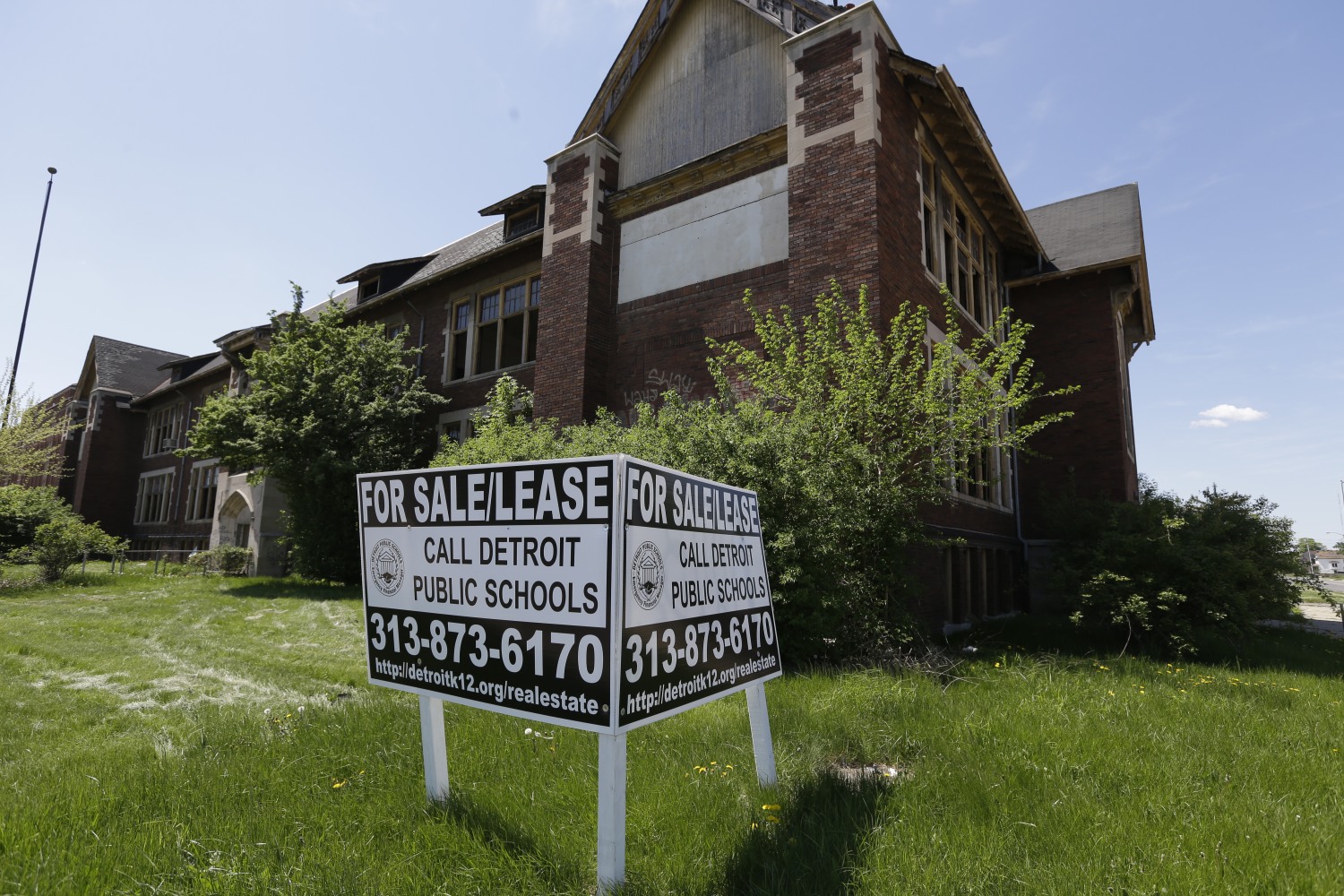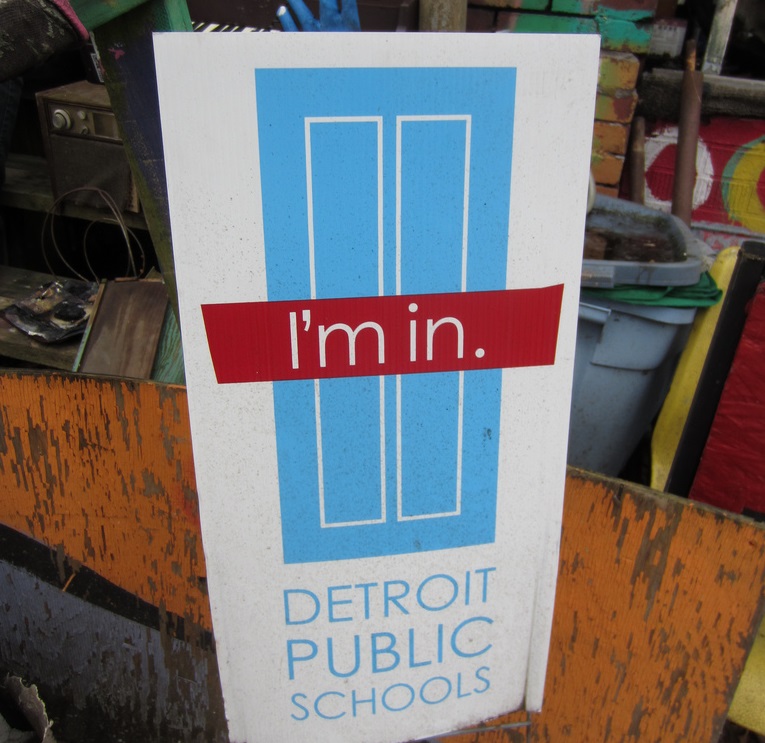EduShyster: The Cost of Choice
A new study finds that charter school expansion in Michigan has meant financial chaos for a growing number of school districts…

EduShyster: Your new study looks at why certain school districts in Michigan have descended into a state of, as I like to describe it, *smoking ruin.* To keep the suspense alive, tell us what you found DID NOT contribute to the severe financial distress of these districts.
David Arsen: The question we looked at was how much of this pattern of increasing financial distress among school districts in Michigan was due to things that local districts have control over as opposed to state-level policies that are out of the local districts’ control: teacher salaries, health benefits, class size, administrative spending. We also looked at an item that the conservative think tanks are big on: contracting out and privatization. We found that, overwhelmingly, the biggest financial impact on school districts was the result of declining enrollment and revenue loss, especially where school choice and charters are most prevalent. We looked at every school district in Michigan with at least 100 students and we followed them for nearly 20 years. The statistics are causal; we’re not just looking at correlation.
EduShyster: There’s a table in your paper which actually made me gasp aloud—which I’m pretty sure is a first. I’m talking, of course, about the chart where you show what happened to Michigan’s *central cities,* including Detroit, as charter schools really started to expand.
Arsen: We have districts getting into extreme fiscal distress because they’re losing revenue so fast. That table in our paper looked at the central cities 
statewide and their foundation revenue, which is both a function of per-pupil funding and enrollment. They had lost about 22% of their funding over a decade. If you put that in inflation adjusted terms, it means that they lost 46% of their revenue in a span ten years. With numbers like that, it doesn’t really matter if you can get the very best business managers—you can get a team of the very best business managers—and you’re going to have a hard time handling that kind of revenue loss. The emergency managers, incidentally, couldn’t do it. They had all the authority and they cut programs and salaries, but they couldn’t balance the budgets in Detroit and elsewhere, because it wasn’t about local decision making, it was about state policy. And when they made those cuts, more kids left and took their state funding with them.
EduShyster: As you followed the trajectory of these school districts, was there a *point of no return* that you could identify? A tipping point in lost enrollment and funding from which they just couldn’t recover?
Arsen: When we looked at the impact of charter schools we found that overall their effect on the finances of districts statewide was modest. Then we looked to see if there were nonlinear, or disproportionate, impacts in those districts where charters enrolled very high and sustained shares of resident students. And then the results got huge. We saw very significant and large impacts of charter penetration on district fund balances for different thresholds, whether there were 15, 20 or 25 % of the students going to charter schools. That was really striking. At every one of those thresholds, the higher the charter penetration, the higher the adverse impact on district finances. They’re big jumps, and they’re all very significant statistically. What’s clear is that when the percentage gets up to the neighborhood of 20% or so, these are sizeable adverse impacts on district finances.
EduShyster: You often hear the argument that, as charter schools expand, the students they leave behind in district schools cost more to educate. That seems to have been a clear finding of your study.
We also found that as the share of students in the district that are going charters increases, there is a causal relationship of a larger share of the students who are left behind in the district who receive special education services.
Arsen: We found that as the district’s share of special education students increases, it has quite a negative impact on district fund balance. We also found that as the share of students in the district that are going charters increases, there is a causal relationship of a larger share of the students who are left behind in the district who receive special education services. So there is a direct impact from charters on the loss of enrollment in the district, but there’s also an indirect impact on the changing composition of the children who remain in the district. There are federal laws that stipulate the educational services that are due to children with special needs, but the feds don’t fund it fully and leave it up to the state to come up with a funding arrangement. Michigan is kind of chintzy with this; for the state as a whole, they cover less than 30% of the required costs of special education. So if you get a high concentration of students who require special education services, these are costs that have to be absorbed by the school district’s general fund or through other local or county-level revenue sources.
EduShyster: Michigan has a now infamous emergency management law that allows the state to take over school districts that are in severe financial distress. But it sounds like what you’re saying is that state-level policy choices are causing the distress that the state is now stepping into *fix.* Do I have that right?

Arsen: The law presumes that financial problems in these districts are caused by poor decision making of local officials, and this justifies their displacement through emergency management. Yet our findings suggest that state school finance and choice policies were in large part responsible for the underlying financial problems. Once in control, however, emergency managers have moved aggressively to change district operations, closing schools, laying off administrators and teachers, cutting employee compensation, outsourcing services, and in two cases transferring the operation of the entire district to private charter management companies. The municipalities and school districts that have been taken over are predominantly African American and poor. The optics are not good, especially in the context of the long civil rights struggle for voting rights. In most of the districts in which the state has taken over the district, very substantial portions of students are now attending charter schools. In Detroit more students attend charters than district schools, the second highest percentage in the country after New Orleans.
EduShyster: My adopted home state of Massachusetts is in the throes of a heated debate over whether to lift its cap on charter schools. Any advice for how we can avoid the *smoking ruin* course of urban districts in Michigan?
On the funding side, you have to have a system in which the revenues that schools receive are adjusted to correspond to the costs over which local districts have no control.
Arsen: Michigan has a very strong charter constituency and lobby, and we’ve made a series of policy choices that put districts that are obliged to educate low-income children, especially urban kids, at a disadvantage. If you have an education system with a lot of choice, it has to be well structured and regulated. On the funding side, you have to have a system in which the revenues that schools receive are adjusted to correspond to the costs over which local districts have no control. We don’t do that in Michigan and the result is that you give schools an incentive to orient themselves towards educating 
lower-cost kids. Revenues need to match the costs. If the funding follows the kids, you need policies that cushion districts from having very precipitous declines in revenue. On the choice policy side, you need a system that regulates the supply of choice schools better than what we have. A place like Detroit is just chaotic. It’s the foremost example nationally of the adverse consequences of a poorly regulated education market.
EduShyster: One can’t help but notice that, when the name *Michigan* is uttered, charter advocates turn a special shade of green—let’s call it Flint River green. But where others see a cautionary tale, I see the future, where education is provided by people with the biggest stake in its outcome: for-profit companies.
Arsen: Our charter sector in Michigan is unusual nationally in the extent to which the schools are run by for-profit management companies. For years and years I said that I didn’t have a problem with for-profit management companies so long they’re obliged by state rules to be responsive not just to their owners or shareholders but to the public taxpayers and children. But I’ve actually stopped saying that because we have a situation in Michigan where the charter interests are very influential in the state legislature. It makes it much harder in this state to reach consensus not only on coherent choice and finance policies, but also on policy relating to all sorts of education issues, whether its curriculum, assessment, or employment practices. That is very tricky turf.
David Arsen is a professor of education policy in the Michigan State University College of Education. Which Districts Get Into Financial Trouble and Why: Michigan’s Story will appear in the fall edition of the Journal of Education Finance.
Like my work? Your financial support will help me do more of it.
This blog post has been shared by permission from the author.
Readers wishing to comment on the content are encouraged to do so via the link to the original post.
Find the original post here:
The views expressed by the blogger are not necessarily those of NEPC.